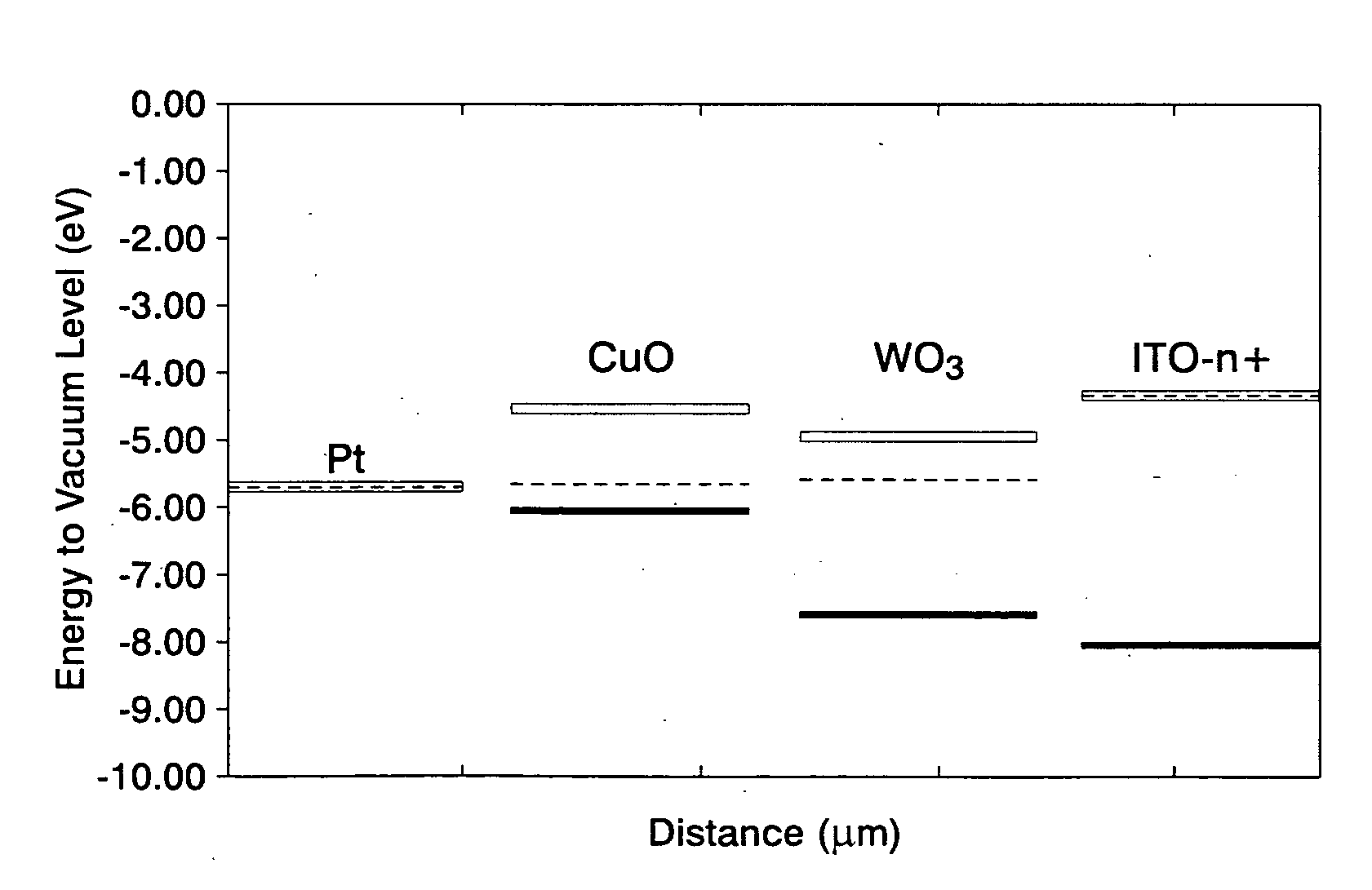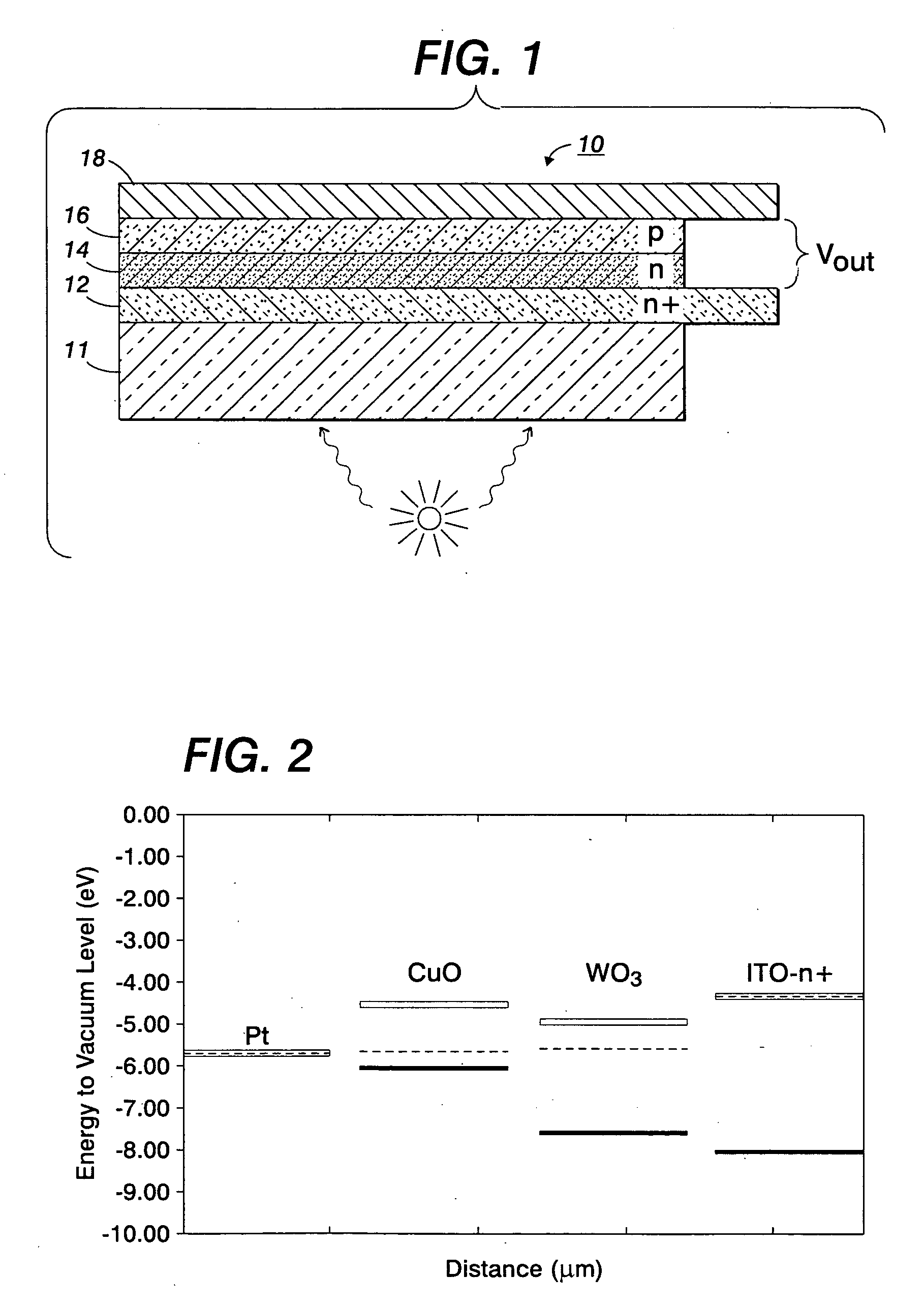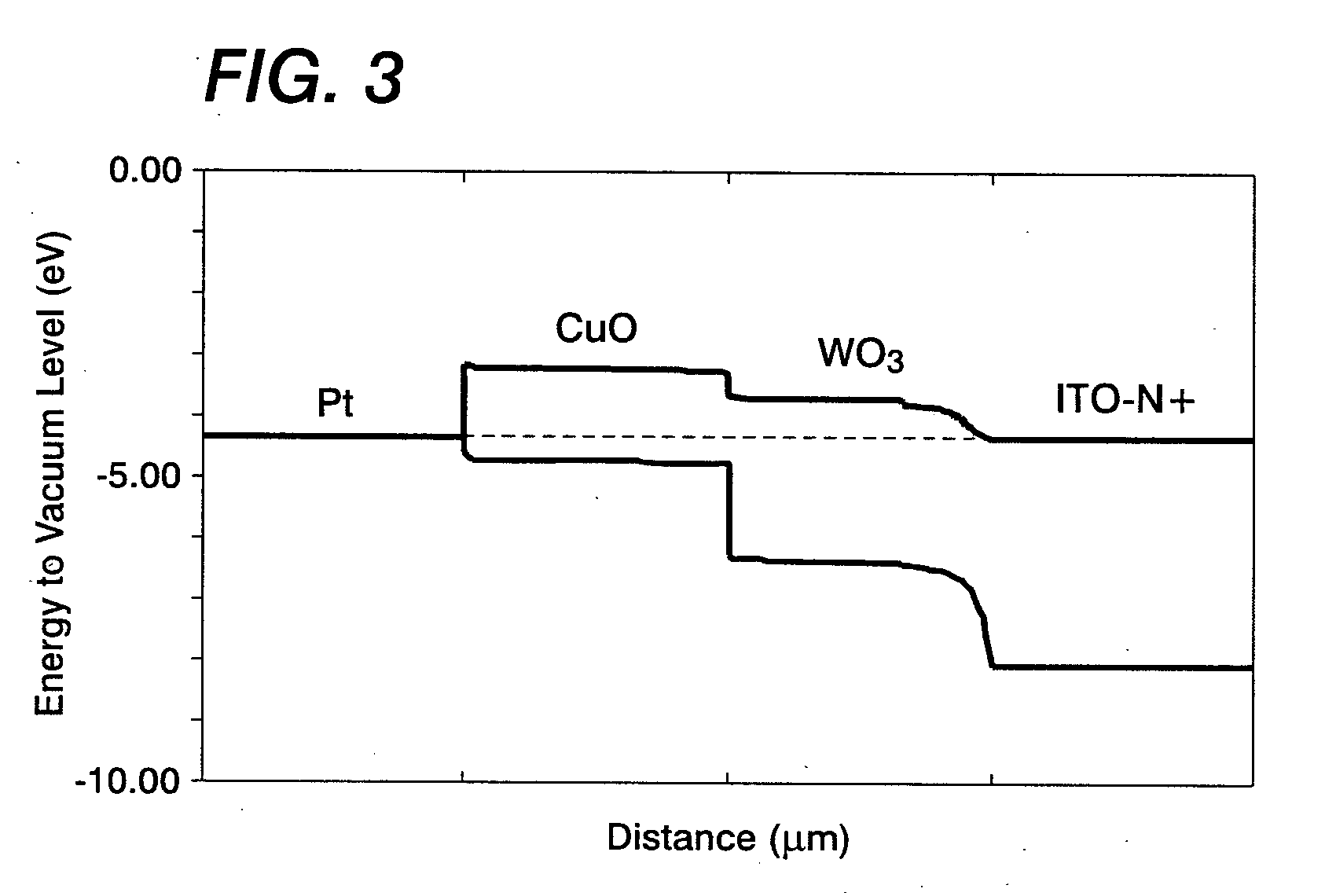Heterojunction photovoltaic cell
a photovoltaic cell and heterojunction technology, applied in the field of solar photovoltaic cells, can solve the problems of high manufacturing cost, complex fabrication process for junctions of dissimilar materials, and poor mobility of such materials
- Summary
- Abstract
- Description
- Claims
- Application Information
AI Technical Summary
Benefits of technology
Problems solved by technology
Method used
Image
Examples
example 1
[0078] A layer of ITO was sputter deposited on a glass substrate in a manner known by one of ordinary skill in the art. A layer of tungsten of approximately 40 nm in thickness was sputter deposited on the ITO. A 40 nm layer of copper was then sputter deposited on the tungsten layer without breaking vacuum. Vacuum was then broken. The W—Cu metal stack was heated on a hot plate at 500° C. for 15 minutes to create a WO3 / CuO heterojunction.
[0079] The resultant photovoltaic device exhibited an open circuit photovoltage of approximately 0.3 volts and a closed circuit current of approximately 1.8 mA / cm2.
[0080] Including the substrate, the photovoltaic cell 10, 20 in FIGS. 1 and 5 generally has a thickness of from about 0.5 mm to about 2.0 mm.
[0081] To avoid reflection losses, the bottom side of the photovoltaic cell 10, 20, in FIGS. 1 and 5 can be provided with an antireflection coating having one, two, or more layers.
[0082] To increase the light yield, the reverse side of the photovol...
PUM
 Login to View More
Login to View More Abstract
Description
Claims
Application Information
 Login to View More
Login to View More - R&D
- Intellectual Property
- Life Sciences
- Materials
- Tech Scout
- Unparalleled Data Quality
- Higher Quality Content
- 60% Fewer Hallucinations
Browse by: Latest US Patents, China's latest patents, Technical Efficacy Thesaurus, Application Domain, Technology Topic, Popular Technical Reports.
© 2025 PatSnap. All rights reserved.Legal|Privacy policy|Modern Slavery Act Transparency Statement|Sitemap|About US| Contact US: help@patsnap.com



